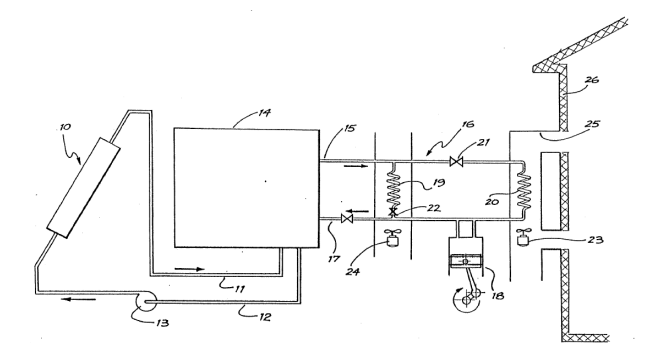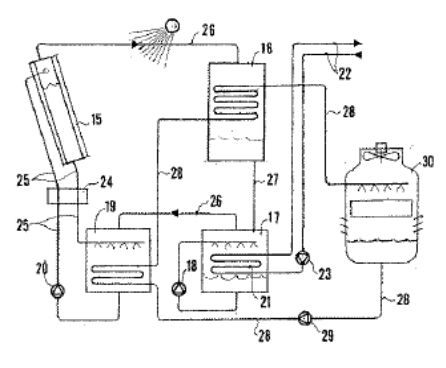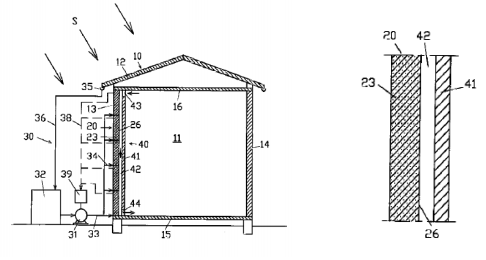Multipurpose Stadium Using Solar Cooling Technology
Solar cooling
The term ‘solar cooling’ refers to devices and processes that use solar energy for cooling. Solar cooling systems have the advantage of using mainly non-toxic and environmentally sound working fluids such as water and salt solution. they can also be used as stand-alone systems too. While solar cooling systems are in many cases able to concurrently generate refrigeration and save conventional energy. Cooling can be provided by both active and passive systems, but the capacity of solar cooling devices is generally at its peak when insolation, i.e. solar irradiation, is high. However, solar cooling devices can ideally meet the needs of countries in sunny regions where the need for cooling will be generally high around noon.
The search for solar cooling devices and processes will not be limited to technologies using solar radiation for air-conditioning of buildings. You have other applications such as cooling of water, refrigeration of sensitive goods, e.g. medicaments, food or desalination of seawater will also be included. There are at least four different established techniques used to realize solar cooling; like vapor compression, sorption-based cooling, evaporative cooling, and solar ejector cooling.
Vapour compression
A vapor compression refrigeration system uses a circulating liquid refrigerant as the medium which absorbs and removes heat from the space to be cooled and then it dissipates that heat elsewhere. While this type of cooling system is widely used for air-conditioning as well as for refrigeration. Vapour compression machines generally comprise a mechanical compressor, an expansion valve, a condenser, and an evaporator arranged in a closed loop, which transforms the refrigerant into different thermodynamic states. First, the vaporous refrigerant is compressed and heated in the compressor, transforming the refrigerant into a state at which it can later be condensed to a liquid in the condenser. During the condensation process, the refrigerant yields thermal energy to the condenser, which is absorbed and removed by cooling water or cooling air.
Solar sorption cooling
The vapour compression is a very mature and familiar technology, and it involves vibration and noise owing to the functional principle of the components. Sorption-based cooling devices are based on different processes, and are alternatives to vapour compression machines if the drawbacks of these machines need to be overcome. In addition, sorption-based cooling devices are particularly attractive if the power supply is insufficient or pricey, or if thermal energy is easily available, e.g. from solar plants or solar heat collectors. However, sorption-based cooling devices rely on so-called sorbents, which are capable of ”holding” liquids or gases. There are two technologies distinguished: absorption cooling where the liquids or gases are dissolved in the bulk of the sorbent in one stage of the process, and released in another stage; and adsorption cooling where the liquids or gases are bound to the surface of the sorbent in one stage of the process, and release in another stage. Such phase changes are accompanied by release or consumption of thermal energy.
Evaporative cooling
In evaporative cooling devices, refrigeration is generally achieved by evaporating a liquid. Evaporation consumes thermal energy which lowers the temperature of the substrate on which evaporation takes place, and thus also of the neighbouring material. Most common are evaporative systems where water is evaporated into air. Evaporative cooling devices are mainly used for air-conditioning.
Solar ejector cooling
Solar ejector cooling devices rely on so-called ejectors that use the Venturi effect and perform the task of a thermally-driven compressor in a heat pump refrigeration cycle. The fluid is directed through a nozzle-type ejector, which narrows in a first section and widens in a second section (see below figure). Accordingly, the velocity of the fluid increases in the first section while the pressure decreases, creating a low-pressure zone in the suction chamber -52 where a second fluid can be drawn in. Both fluids mix and approach the exit -55 of the nozzle in the second section where the mixture is slowed down and pressure increases again.
In solar ejector cooling devices, the second fluid, mostly water vapour, is generally drawn in from an evaporator. As a consequence, additional water is vaporised in the evaporator and thermal energy is extracted from that component, chilling the component and its surroundings.
We will learn more on this topic in the next part.









